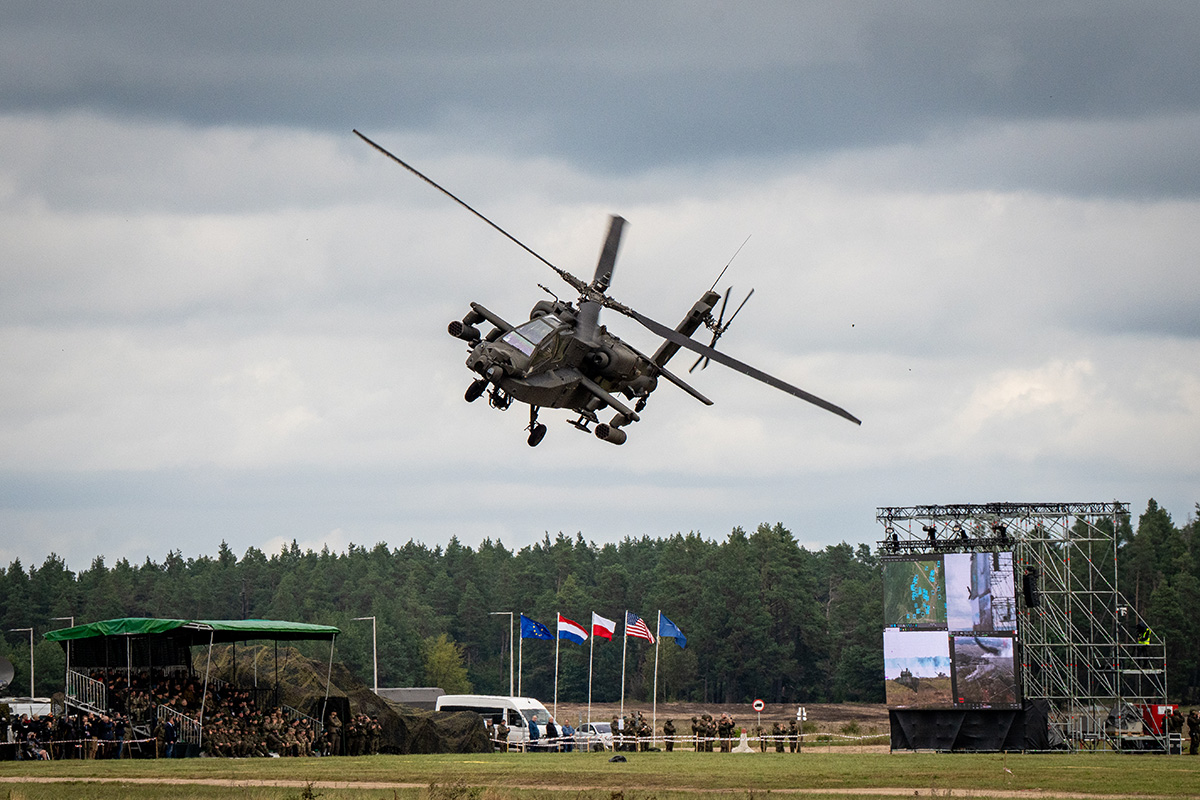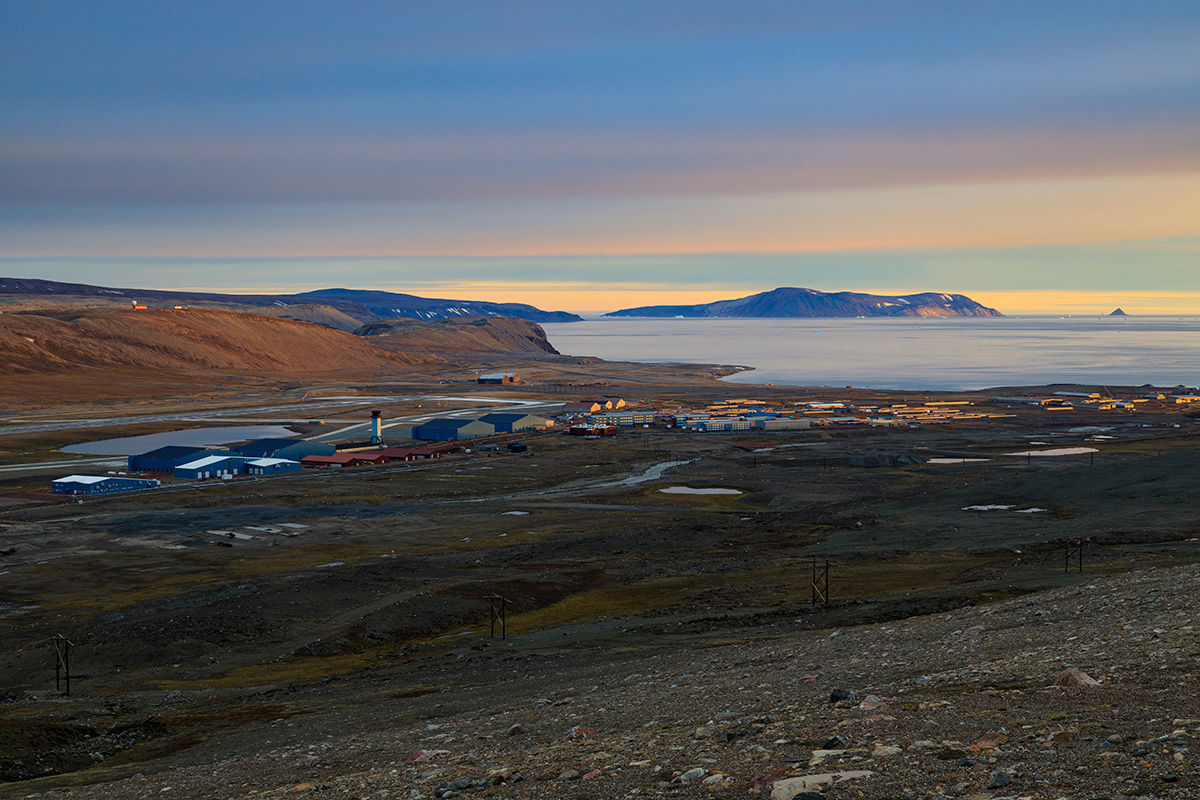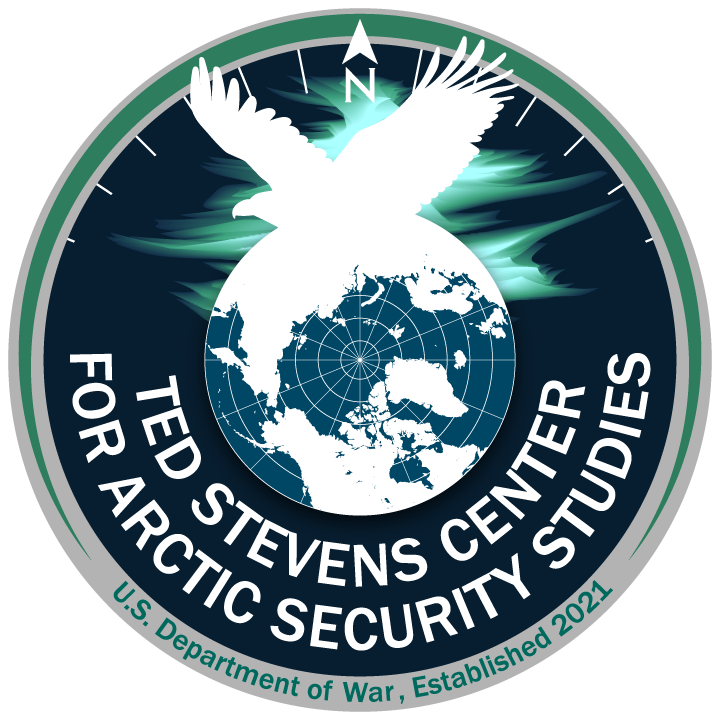
A U.S. Army AH-64 Apache attack helicopter conducts a flyover of the distinguished visitor area as part of the culmination of Iron Defender 25 at Orzysz Training Area, Poland, Sept. 17, 2025.
This week, we explore Arctic developments across the European continent through:
- The Big Picture: Central Europe Takes Center Stage
- From the Field: Copenhagen Looks West
- By the Numbers: Eastbound on the Northern Sea Route
The Big Picture
Central Europe Takes Center Stage
Today’s Arctic is split between NATO and Russia. While Ukraine is not a NATO member, the alliance has been drawn increasingly closer to the conflict. In response to Russia’s incursions into Polish and Estonian airspace, recently confirmed U.S. Ambassador to the United Nations Mike Waltz vowed to “defend every inch of NATO”. That includes many inches of NATO territory in the Arctic; every Arctic nation but Russia is a NATO member.
When multiple Russian drones violated Polish airspace, Poland invoked Article 4 of NATO’s founding agreement, the Washington Treaty. This triggered a special consultation of the North Atlantic Council, the alliance’s top political decision-making body. Poland’s request marked the eighth use of Article 4 since 1949, with the previous invocation occurring in response to Russia’s 2022 invasion of Ukraine. The NAC met on Sept. 10ember and shortly thereafter launched Operation Eastern Sentry.
Heightened NATO-Russia tensions bear many implications for the Arctic. Hybrid warfare remains a major concern for the Arctic’s remote infrastructure vulnerable to sabotage. Russia also uses the Arctic as a weapons testing ground, reportedly conducting a hypersonic missile test in the Barents Sea earlier this month. Given NATO’s commitment to deterrence and de-escalation, ongoing Russian Arctic activity will likely further the alliance’s emphasis on the High North.
Senior European defense policy makers, practitioners, and academics convened to discuss exactly these challenges during the annual High North Security Dialogue. The Dialogue is a joint program of the Ted Stevens Center for Arctic Security Studies and the George C. Marshall European Center for Security Studies. This year’s program analyzed deterrence and defense in the High North, with panels and discussion sessions focused on evolving Russian posture in the Arctic. The Dialogue demonstrated the importance of international security cooperation to fortify deterrence across the European continent.
From the Field

Nestled in a remote corner of Greenland, Pituffik Space Base features a 10,000-foot runway and the northernmost deep-water port in the world.
Copenhagen Looks West
Demonstrating Denmark’s responsiveness to “increased focus on the security situation in the Arctic,” Copenhagen has upped its military activity and investment in Greenland this month. Recent military activity centered on NATO Exercise Arctic Light, which brought more than 550 personnel to train in and around the Danish territory. The multi-domain exercise emphasized civil-military collaboration and Joint Arctic Command’s ability to integrate NATO and partner units into Arctic operations.
On the investment front, Copenhagen entered a $1.6 billion DK agreement with Greenland to support healthcare and infrastructure projects in support of a self-sustaining Greenland. Previously, Greenland has looked to foreign financing for infrastructure projects. Copenhagen ultimately vetoed bids by Chinese firms due to national security concerns. The new agreement provides Danish funding for a new runway and deepwater port. Along with the construction of the deepwater Port of Nome, Denmark’s investment in the Qaqortoq Port would augment the existing portfolio of Arctic seaports.
By the Numbers
Daily images of ice cover in the Arctic Ocean (left) and around Antarctica (right) reveal sea ice reaching its annual minimum each September (data from Sept. 14, 2023, to Sept. 13, 2025).
Eastbound on the Northern Sea Route
September marks the minimum annual extent of sea ice along the Northern Sea Route. Initial data for the NSR’s 2025 season has begun to roll in while more countries assess its variability. Shipping traffic on the Northern Sea Route has been dominated by Russia-China trade while the two countries work together to further develop the route. Last month, U.S. ally, South Korea, announced plans to establish an Arctic shipping division within its government specifically focused on developing a long-term plan to use the route, and leverage the countries ship building capabilities, to boost its economy and diversify shipping options.




